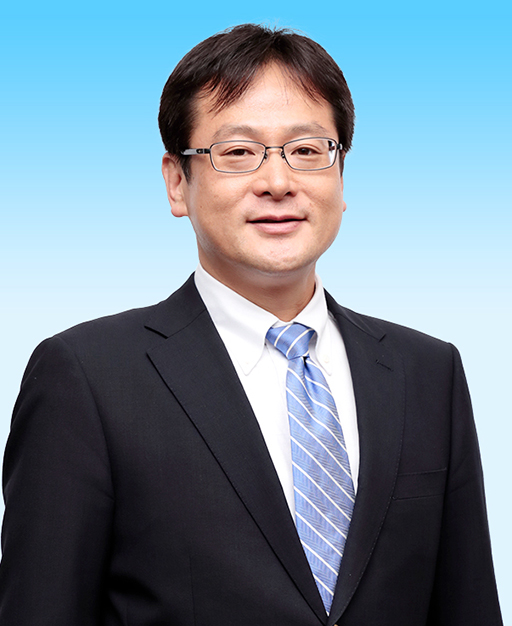TOP
 Research
Research
 Research Teams
Research Teams
 Complex Phenomena Unified Simulation Research Team
Complex Phenomena Unified Simulation Research Team
Complex Phenomena Unified Simulation Research Team
Japanese
Team Principal Makoto TSUBOKURA
 mtsubo[at]riken.jp (Lab location: Kobe)
mtsubo[at]riken.jp (Lab location: Kobe)- Please change [at] to @
- 2015
- Professor, Graduate School of System Informatics, Kobe University (-present)
- 2012
- Team Leader, Complex Phenomena Unified Simulation Research Team, AICS (renamed R-CCS in 2018), RIKEN (-present)
- 2007
- Associate Professor, Faculty of Engineering, Hokkaido University
- 2002
- Associate Professor, University of Electro-Communications
- 1999
- Lecturer, Interdisciplinary Graduate School of Science and Engineering, Tokyo Institute of Technology
- 1997
- Post Doctoral Researcher, JSPS
- 1997
- Ph.D, Faculty of Engineering, The University of Tokyo
Keyword
- Fluid Dynamics
- Turbulence
- Computational Fluid Dynamics
- Vehicle Aerodynamics
- Large Eddy Simulation
Research summary
Most complex phenomena observed in manufacturing processes are relating to or coupled with other physical or chemical phenomenon such as turbulence diffusion, structure deformation, heat transfer, aeroacoustics, electromagnetic fields or chemical reactions. While the use of computer simulations is rapidly spreading in industry as a helpful engineering tool, their limitations of treating such coupled phenomena are come to be an important issue to be solved. This is because each simulation method has been optimized for a specific phenomenon, and once two or more solvers of different phenomena are coupled to deal with a complicated target, computational performance is seriously degraded. Thus our main objective is to establish a new simulation framework for complex and coupled phenomena by utilizing the HPC environment and to expand its use in engineering applications by fostering next-generation digital engineering.
For that purpose, we are researching and developing a unified simulation method called CUBE. Its goal is to solve multiple partial differential equations on the same hierarchically structured grid system. To date, we have singled out three main areas to improve this method. First, to speed up CUBE by considering next-generation hardware architecture and to realize real time simulations for industrial use. Second, to improve the accuracy of CUBE for dealing with coupled phenomena when realizing real world simulations for engineering applications, as this will expand the possibility of using simulations in real operating conditions. Third, to promote the sophisticated use of CUBE in manufacturing processes: For example, applying it to multi-objective optimization by utilizing assimilation of existing experimental data, or by applying deep learning to big data simulations.
Main research results
Simulation of a Vehicle’s Coupled Aerodynamics and 6DoF-Motion in Real Driving Conditions
By developing a new hybrid Euler-Lagrangean moving boundary method for the immersed boundary technique, and implementing it in the CUBE unified simulation framework, we have made it possible to simulate vehicular aerodynamics coupled with 6DoF motion. We successfully conducted a real-world simulation of a vehicle in cornering conditions. To achieve this, we used both detailed and dirty CAD data (provided by an automotive OEM) and the wheel rotation together with the front wheels’ steering angle-change in order to reproduce the vehicle’s complicated shape. This innovative simulation makes it possible to evaluate high-speed drivability from CAD data only. This presents new manufacturing possibilities for vehicle makers by means of optimizing a vehicle’s total performance in an integrated manner at an early stage of development before real prototyping begins.

Representative papers
- Jansson, N., Bale, R., Onishi, K., Tsubokura, M.,
"Dynamic Load Balancing for Large-Scale Multiphysics Simulations",
High-Performance Scientific Computing : Jülich Aachen Research Alliance (JARA) High-Performance Computing Symposium, pp. 13-23, (2016). - Wu-Shung Fu, Wei-Hsiang Wang, Chung-Gang Li & Makoto Tsubokura,
"An investigation of the unstable phenomena of natural convection in parallel square plates by multi-GPU implementation",
An International Journal of Computation and Methodology, Volume 71(1), pp.66-83, (2016). - Li Chung-Gang, Tsubokura Makoto, Bale Rahul,
"Framework for simulating natural convection in practical applications",
International Communications in Heat and Mass Transfer, Volume 75, pp.52-58, (2016). - Jing Li, Makoto Tsubokura, Masaya Tsunoda,
"Numerical Investigation of the Flow Around a Golf Ball at Around the Critical Reynolds Number and its Comparison with a Smooth Sphere",
Flow, Turbulence and Combustion, Volume 95, Issue 2-3, pp.415-436, (2015) - Chun-Gang Li, Makoto Tsbuokura, Keiji Onishi:
"Feasibility Investigation of Compressible Direct Numerical Simulation with Preconditioning Method at Extremely Low Mach Numbers"
International Journal of Computational Fluid Dynamics, vol.28, Issue 6-10, pp.411-419, (2014) - Keiji Onishi, Makoto Tsubokura:
"Vehicle Aerodynamics Simulation for the Next Generation on the K computer: Part 2 Use of Dirty CAD Data with Modified Cartesian Grid Approach"
SAE International Journal of Passenger Cars - Mechanical Systems, 7(2): 2014-01-0580(2014) - Makoto Tsubokura, Andrew Hamilton Kerr, Keiji Onishi, Yoshimitsu Hashizume:
"Vehicle Aerodynamics Simulation for the Next Generation on the K-computer: Part 1 Development of the framework for fully unstructured grids up to 10 billion numerical elements"
SAE International Journal of Passenger Cars - Mechanical Systems, 7(2): 2014-01-0621(2014) - Wu-Shung Fu, Chung-Gang Li, Makoto Tsubokura, Yun Huang, J. A. Domaradzki:
"An Investigation of Compressible Turbulent Forced Convection by an Implicit Turbulence Model for Large Eddy Simulation"
Numerical Heat Transfer, PartA: Applications, vol.64, issue 11, pp.858-878 (2013)
